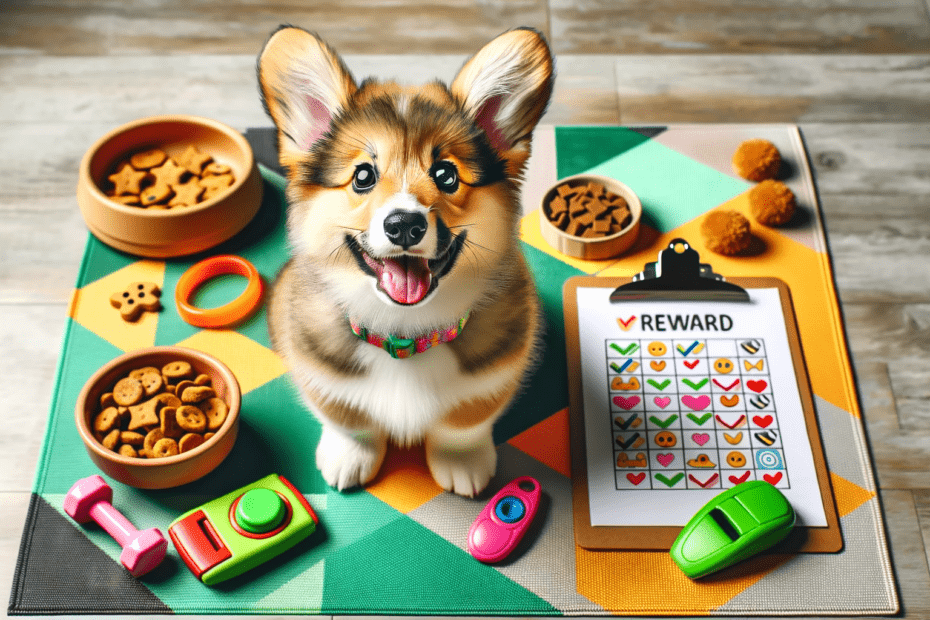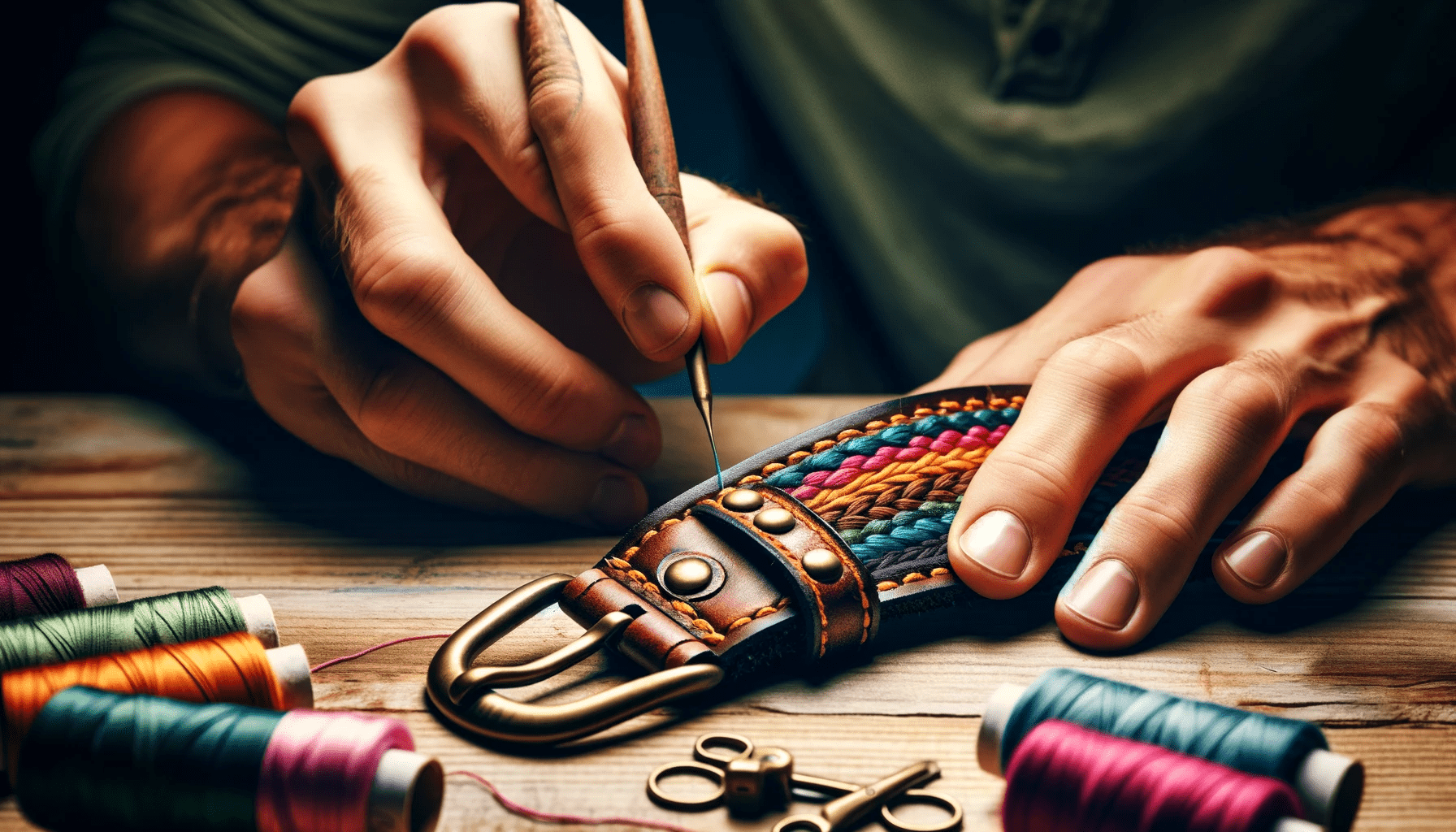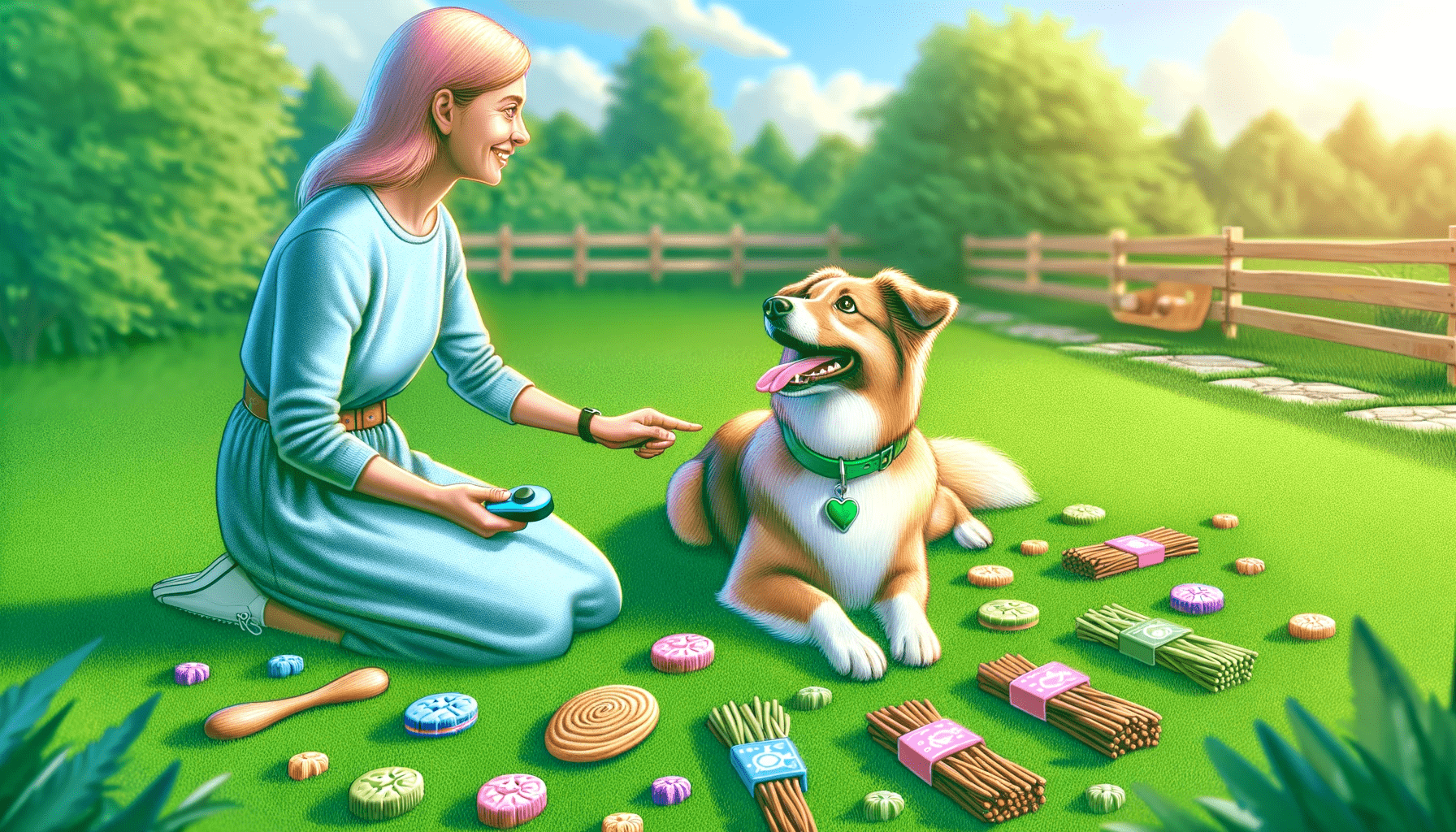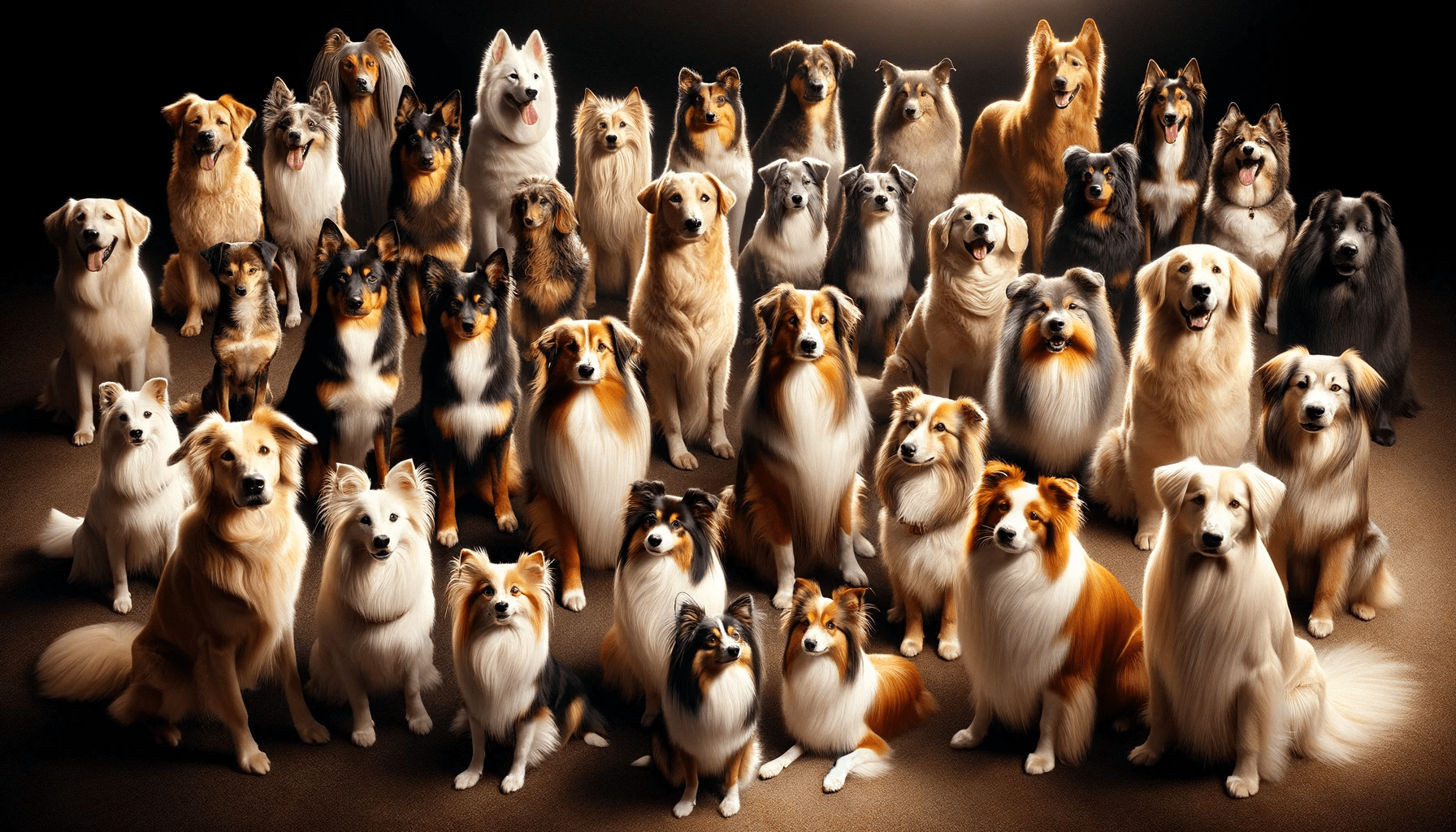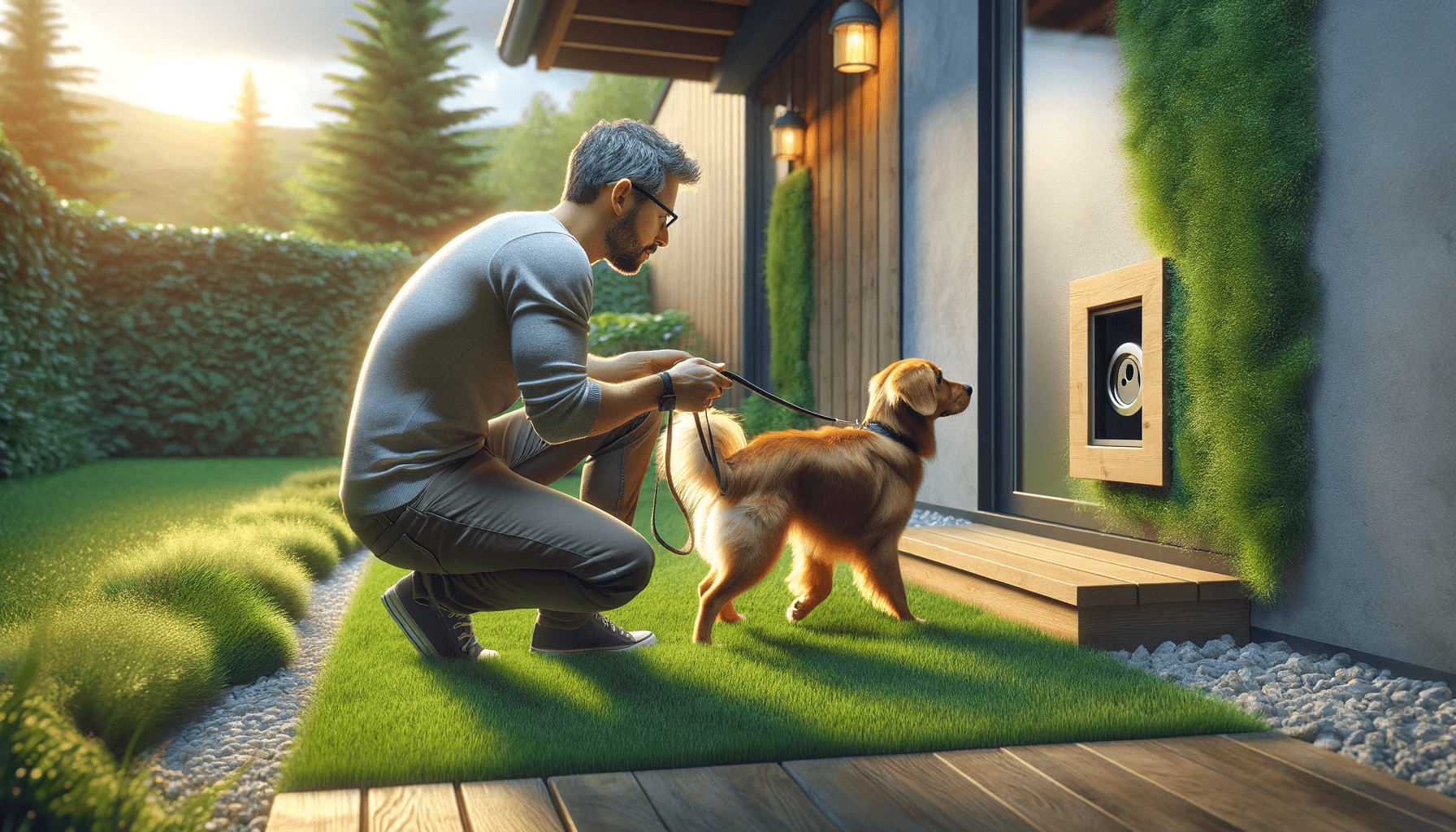Are you ready to train your puppy using clicker training? Look no further! In this article, we have compiled 14 essential tips to help you succeed.
From choosing the right clicker to troubleshooting common challenges, we've got you covered.
With our expert advice, you'll learn how to familiarize your puppy with the clicker, time your clicks perfectly, and incorporate clicker training into everyday activities.
Get ready to have fun and watch your puppy thrive with these essential clicker training tips.
Key Takeaways
- Consider the size, sound, and button responsiveness of the clicker
- Introduce the clicker by clicking and offering a treat or praise
- Be consistent with timing and keep training sessions short and frequent
- Incorporate the clicker into every training session
Choosing the Right Clicker
To choose the right clicker for clicker training your puppy, consider its size and ease of use. Familiarizing with the clicker and tracking your training progress are essential aspects of successful clicker training.
When it comes to choosing the right clicker, size is an important factor to consider. You want a clicker that fits comfortably in your hand, allowing for easy and precise clicking. A clicker that's too small may be difficult to hold, while a clicker that's too large may be cumbersome and uncomfortable to use. Finding the right size clicker will ensure that you can click accurately during training sessions.
Ease of use is another crucial consideration. Look for a clicker that has a clear and distinct sound that's easy to hear. This will help your puppy easily associate the click with a reward. Additionally, choose a clicker that's easy to click, with a responsive button that doesn't require too much pressure. This will make clicker training a smooth and effortless experience for both you and your puppy.
Finally, consider a clicker that allows you to track your training progress. Some clickers come with built-in features like a counter or a timer, which can be incredibly useful for keeping track of the number of clicks or the duration of training sessions. This way, you can monitor your puppy's progress and make adjustments as needed.
Familiarizing Your Puppy With the Clicker
Start by introducing the clicker to your puppy, allowing them to become familiar with the sound and its association with rewards. Clicker training techniques are a popular and effective way to train puppies. The clicker serves as a marker to communicate to your puppy that they've performed a desired behavior and will be rewarded. To introduce the clicker, simply click it and immediately offer a small treat or praise. Repeat this process several times, so your puppy begins to understand that the sound of the clicker is followed by something positive. It's important to be consistent with the timing of the click and the reward, as this will reinforce the desired behavior. Remember to keep training sessions short and frequent for better results.
Clicker training can also be introduced to older dogs. The process is similar, but it may take a bit longer for them to understand the association between the clicker and rewards. Patience and consistency are key when introducing clicker training to older dogs. Start by rewarding simple behaviors and gradually increase the difficulty as your dog becomes more comfortable with the clicker. With time and practice, your puppy or older dog will quickly learn to associate the sound of the clicker with positive reinforcement and will be eager to learn new behaviors.
Timing Is Everything: Click at the Right Moment
Ensure that you click the clicker at the precise moment your puppy performs the desired behavior, reinforcing their understanding of the connection between the click and the reward. Timing is everything when it comes to clicker training. Here are some essential tips to help you click at the right moment:
- Observe your puppy closely: Pay attention to their body language and actions so that you can anticipate when they're about to perform the desired behavior. This will allow you to click at the exact moment it happens, ensuring clear communication.
- Practice timing in agility training: Timing is particularly crucial in agility training, where split-second decisions can make a big difference. Use the clicker to mark your puppy's correct performance of agility obstacles, helping them understand what's expected of them.
- Use the clicker for leash training: Leash training requires precise timing to reinforce good behaviors and discourage unwanted ones. Click and reward your puppy when they walk calmly beside you or respond to leash cues promptly.
- Consistency is key: Be consistent with your timing. Clicking too early or too late can confuse your puppy and weaken the association between the click and the reward. Practice your timing skills to ensure accuracy.
Start With Simple Commands
When introducing clicker training to your puppy, it's important to begin with simple commands that they can easily understand and master. This will help build their confidence and set a solid foundation for more complex behaviors later on. Start by teaching basic commands such as sit, stay, and come. These commands are easy for puppies to grasp and provide a good starting point for their training journey.
Teaching tricks can also be a fun way to engage your puppy in clicker training. Tricks like shake hands, roll over, or play dead not only entertain your puppy but also strengthen the bond between you. Remember to break down each trick into small steps and reward your puppy for every successful attempt.
In addition to teaching tricks, clicker training can also be used for leash walking. Start by getting your puppy used to wearing a collar and leash, rewarding them for calm behavior. Then, use the clicker to reinforce desired walking behaviors, such as walking by your side and not pulling on the leash. By clicking and treating whenever your puppy exhibits the desired behavior, they'll quickly learn what's expected of them during walks.
Consistency Is Key: Use the Clicker for Every Training Session
To effectively train your puppy using a clicker, consistency is key. Make sure to incorporate the clicker into every training session to reinforce positive behaviors.
By consistently using the clicker, your puppy will quickly learn to associate the sound with rewards, making the training process more effective and efficient.
Additionally, using the clicker for every training session allows you to track your puppy's progress and identify areas that may require additional focus.
Clicker Training Benefits
During each training session, consistently use the clicker to reinforce desired behaviors in your puppy. Clicker training offers several benefits that make it a valuable tool for puppy training. Here are some of the advantages:
- Clear Communication: The clicker provides a distinct sound that signals to your puppy when they've performed the desired behavior, making it easier for them to understand what you want.
- Positive Reinforcement: Clicker training focuses on rewarding good behavior rather than punishing bad behavior, creating a positive and enjoyable learning experience for your puppy.
- Increased Engagement: The use of a clicker encourages your puppy to actively participate in the training process, as they learn to associate the click with a reward.
- Versatility: Clicker training isn't limited to puppies; it can also be effective for training older dogs and even cats, making it a versatile training method for all types of pets.
Establishing a Routine
To establish a routine for clicker training, consistently incorporate the use of the clicker in every training session with your puppy. This will help your puppy understand that the sound of the clicker is associated with a reward.
One way to incorporate clicker training into your routine is by using it during daily walks. As you walk your puppy, click and reward whenever they exhibit positive behavior, such as walking calmly by your side or sitting when you stop. This will reinforce good behavior and help your puppy understand what's expected of them during walks.
Training Progress Tracking
Track your training progress consistently by using the clicker in every session with your puppy. This will help you measure the success of your training efforts and ensure that you're making steady progress.
Here are a few reasons why tracking progress is important:
- Identify areas of improvement: By tracking your training sessions, you can identify specific areas where your puppy may be struggling and focus on improving those skills.
- Celebrate milestones: Tracking progress allows you to see how far your puppy has come and celebrate the milestones they've achieved along the way.
- Stay motivated: Seeing your puppy's progress can be incredibly motivating and encourage you to continue training with enthusiasm.
- Adjust training strategies: Tracking progress helps you determine what training strategies are effective and what may need to be adjusted to better suit your puppy's needs.
Consistently tracking your training progress will ensure that you're on the right path to successfully train your puppy using the clicker method.
Gradually Increase Difficulty Levels
To effectively train your puppy using clicker training, it's important to gradually increase the difficulty levels of the tasks you ask them to perform. This helps to balance challenge and progress, ensuring that your puppy continues to learn and grow.
Balancing Challenge and Progress
You should gradually increase the difficulty levels when balancing challenge and progress in clicker training puppies. This allows you to keep your puppy engaged and motivated while ensuring that they continue to learn and grow. Tracking training progress is important to ensure that you're making steady advancements.
Here are some tips to help you balance challenge and progress effectively:
- Start with simple commands and gradually introduce more complex ones.
- Increase distractions gradually to test your puppy's focus and obedience.
- Vary the training environment to expose your puppy to different situations.
- Set realistic goals and celebrate small achievements along the way.
Building Lasting Learning
Increase the complexity of training exercises gradually to foster lasting learning in your puppy.
Building upon the foundation you have established, it's important to gradually increase the difficulty level of the training games you play with your puppy. This allows them to develop their skills and retain the knowledge they've acquired.
Clicker training for socialization purposes can also benefit from this approach. Start with simple tasks, such as sit or stay, and gradually introduce more challenging commands or situations. For example, you can practice recall in different environments or incorporate distractions during training sessions.
Use Positive Reinforcement With Treats
Start by rewarding your puppy with treats when they exhibit the desired behavior during clicker training. Positive reinforcement with treats is an effective way to encourage your puppy to repeat the behavior you want.
Here are some tips for using treats in clicker training:
- Choose high-value treats: Use treats that your puppy finds irresistible. This will make them more motivated to work for the reward.
- Be consistent: Give the treat immediately after your puppy performs the desired behavior. This helps them make the connection between the behavior and the reward.
- Gradually decrease treat frequency: Once your puppy understands the behavior, start giving treats intermittently. This helps them generalize the behavior and not rely solely on treats.
- Use treats strategically: Introduce distractions during clicker training to teach your puppy to focus on you despite the distractions. Use treats to reward your puppy for maintaining their attention on you in the presence of distractions.
Avoid Punishment: Focus on Reward-based Training
To effectively train your puppy using clicker training techniques, it's important to focus on reward-based training and avoid punishment. Positive reinforcement techniques are the foundation of reward-based training. Instead of punishing your puppy for unwanted behavior, you should focus on rewarding and reinforcing good behavior.
One of the benefits of reward-based training is that it creates a positive and enjoyable learning experience for your puppy. By using treats, toys, or praise as rewards, you can motivate your puppy to learn and obey commands. This positive association with training will make your puppy more willing to participate and eager to please.
Reward-based training also strengthens the bond between you and your puppy. When you reward your puppy for performing desired behaviors, it builds trust and establishes a positive relationship based on trust and mutual respect. This creates a harmonious environment where your puppy feels safe and secure.
In contrast, punishment-based training methods can have negative consequences. It can lead to fear, anxiety, and aggression in your puppy. Punishment may suppress unwanted behavior temporarily, but it doesn't address the root cause or teach your puppy what to do instead.
Be Patient: Each Puppy Learns at Their Own Pace
When training your puppy using clicker training techniques, it's important to understand that each puppy learns at their own pace. This means that some puppies may pick up on commands quickly, while others may take more time to grasp the concept. As a responsible pet owner, it's crucial to be patient throughout the training process.
Here are some key points to keep in mind:
- Training progress tracking: Keep a record of your puppy's progress to monitor their learning journey. This can help you identify areas where they may be struggling and adjust your training approach accordingly. It also allows you to celebrate their achievements and see how far they've come.
- Consistency is key: Consistency is vital in clicker training. Ensure that you use the same cues and reward system consistently to avoid confusion. This will help your puppy understand what's expected of them and reinforce positive behaviors.
- Troubleshooting common challenges: It's common for puppies to face challenges during training. Be prepared to troubleshoot any difficulties they encounter, such as distractions or fear. Patience will be necessary as you work through these challenges and find solutions that work for both you and your puppy.
- Celebrate small victories: Remember to celebrate even the smallest achievements. This not only motivates your puppy but also strengthens the bond between you. Recognize their efforts and reward their progress to keep them engaged and excited about learning.
Practice Regularly: Short Sessions Are Better Than Long Ones
Consistency in your puppy's training is crucial, so make sure to practice regularly with short training sessions rather than long ones. When it comes to clicker training, the duration of the training sessions and the frequency of practice sessions are important factors to consider.
It's recommended to keep each training session short, typically around 5 to 10 minutes. Puppies have short attention spans, and longer sessions can lead to them getting bored or distracted. By keeping the sessions brief, you can maximize their focus and engagement. Additionally, short sessions allow you to cover specific behaviors or commands without overwhelming your puppy.
In terms of training frequency, it's better to have multiple short sessions throughout the day rather than one long session. This helps your puppy retain the information better as their learning will be reinforced through repetition. It also prevents them from getting tired or frustrated, which can hinder their progress. Aim for at least three to five training sessions per day, ensuring that each one is spaced out to give your puppy time to rest and process what they've learned.
Use Clicker Training for Basic Obedience Commands
Start by incorporating clicker training into your puppy's obedience routine to teach them basic commands. This positive reinforcement method helps puppies associate the sound of the clicker with a reward, making it an effective tool for training.
When using clicker training for basic obedience commands, keep these tips in mind:
- Start with simple commands: Begin with basic commands like 'sit,' 'stay,' and 'come.' These commands are easy for puppies to understand and provide a solid foundation for more advanced training.
- Use treats as rewards: Reward your puppy with a treat immediately after they perform the desired behavior. This helps reinforce the connection between the command, the click, and the reward.
- Be consistent: Use the clicker consistently and ensure that everyone in your household uses the same commands and techniques. This helps prevent confusion and ensures that your puppy understands what's expected of them.
- Avoid punishment: Clicker training focuses on positive reinforcement, so avoid using punishment or harsh corrections. Instead, redirect your puppy's behavior and reward them for making the right choices.
Incorporate Clicker Training Into Everyday Activities
Now that you've mastered using the clicker for basic obedience commands, it's time to incorporate clicker training into everyday activities with your puppy.
One way to do this is by using the clicker during mealtime. By clicking and rewarding your puppy for calm behavior while waiting for their food, you can reinforce good manners and teach them patience.
Another useful application of clicker training is for potty training. By clicking and rewarding your puppy for eliminating in the designated area, you can effectively reinforce the desired behavior.
Training During Mealtime
During mealtime, incorporate clicker training into your everyday activities by using treats as rewards and the clicker as a marker for desired behaviors. This is an effective way to reinforce positive behaviors and teach your puppy new commands.
Here are some tips for incorporating clicker training during mealtime:
- Start by introducing the clicker during mealtime, associating the sound with a reward.
- Use the clicker to mark desired behaviors, such as sitting or staying calm while waiting for food.
- Reward your puppy with a treat immediately after clicking, reinforcing the behavior you want to encourage.
- Gradually introduce distractions during mealtime, such as other pets or noises, to help your puppy learn to focus and obey commands even in distracting environments.
Clicker for Potty Training
To incorporate clicker training into your everyday activities, use the clicker as a marker for desired behaviors during potty training your puppy. Clicker training can be a useful tool for potty training because it allows you to communicate with your puppy in a clear and consistent manner.
When your puppy eliminates in the appropriate spot, such as outside or on a designated potty pad, use the clicker to mark the behavior and immediately follow it with a treat or reward. This helps your puppy understand that eliminating in the right place is what you want.
Additionally, you can use the clicker for other everyday activities like leash training and crate training. By pairing the clicker with positive reinforcement, you can teach your puppy to associate these activities with a reward, making them more enjoyable experiences.
Keep Training Sessions Fun and Engaging
Make sure to incorporate plenty of interactive games and rewards to keep your puppy's training sessions enjoyable and stimulating. Training should be a fun and engaging experience for both you and your puppy. Here are some tips to keep the training sessions exciting:
- Use training games: Incorporate training games into your sessions to make them more interactive and entertaining. For example, you can play hide and seek with your puppy's favorite toy or use treat-dispensing toys to make the learning process more enjoyable.
- Incorporate toys: Toys can be a great tool to keep your puppy engaged during training. Use toys as rewards for good behavior or as a way to redirect their attention during training sessions. Interactive toys, such as puzzle toys, can also provide mental stimulation while reinforcing positive behaviors.
- Vary the rewards: Mix up the rewards you use during training. While treats are often the go-to reward, don't forget about other options like praise, petting, or a quick play session. This variety will keep your puppy motivated and excited to work for different rewards.
- Keep sessions short: Puppies have short attention spans, so it's important to keep training sessions brief and focused. Aim for short sessions of about 5 to 10 minutes, multiple times throughout the day. This way, your puppy will stay engaged and enthusiastic throughout the training process.
Troubleshooting Common Clicker Training Challenges
If you encounter challenges while clicker training your puppy, try implementing these troubleshooting techniques.
One common challenge is leash pulling. To address this issue, start by teaching your puppy loose leash walking in a distraction-free environment. Use the clicker to mark and reward moments when your puppy walks calmly by your side. Gradually increase the level of distraction by practicing in different environments such as parks or busy streets. If your puppy starts to pull, stop walking immediately and wait for them to calm down before continuing. Remember to reward them for walking nicely on a loose leash.
Another challenge you may face is dealing with distractions. Start by training your puppy in a quiet and familiar environment, gradually introducing distractions such as toys or other pets. Use the clicker to mark and reward moments of focus and obedience. If your puppy gets distracted, redirect their attention back to you using treats or toys.
Consistency and patience are key when troubleshooting these challenges. With practice and positive reinforcement, your puppy will become better behaved and more responsive to clicker training.
Frequently Asked Questions
How Do I Choose the Right Clicker for My Puppy?
To choose the right clicker for your puppy, consider the different types available and the factors that matter. Look for a clicker that is comfortable to hold, has a distinct sound, and is easy to use.
What Should I Do if My Puppy Seems Scared or Confused by the Clicker?
If your puppy seems scared or confused by the clicker during training, it's important to address their fear and build their confidence. Start by desensitizing them to the sound and gradually introduce positive associations to make them feel more comfortable.
How Can I Ensure I Click at the Right Moment During Training?
To ensure you click at the right moment during training, start by properly introducing the clicker to your puppy. Use treats and click simultaneously, gradually fading out the treats. Practice timing your clicks with small, clear behaviors for better communication.
What Should I Do if My Puppy Is Struggling With a Particular Command or Task?
If your puppy is struggling with a particular command or task, start by breaking it down into smaller steps and reward each successful attempt. Use different techniques like luring, shaping, or capturing to help them understand and succeed.
Is It Possible to Overuse the Clicker or Rely on It Too Heavily During Training?
Relying too heavily on a clicker for puppy training may have drawbacks. Overusing it could make your puppy dependent on the clicker. Alternatives like verbal cues and rewards can help create a well-rounded training experience.
Conclusion
In conclusion, clicker training is a highly effective method for training puppies.
By choosing the right clicker, familiarizing your puppy with the sound, and using it consistently during training sessions, you can teach your puppy basic obedience commands and incorporate clicker training into everyday activities.
Remember to keep the sessions fun and engaging, and troubleshoot any challenges that may arise.
With these essential tips, you'll be well on your way to successfully clicker training your puppy.
